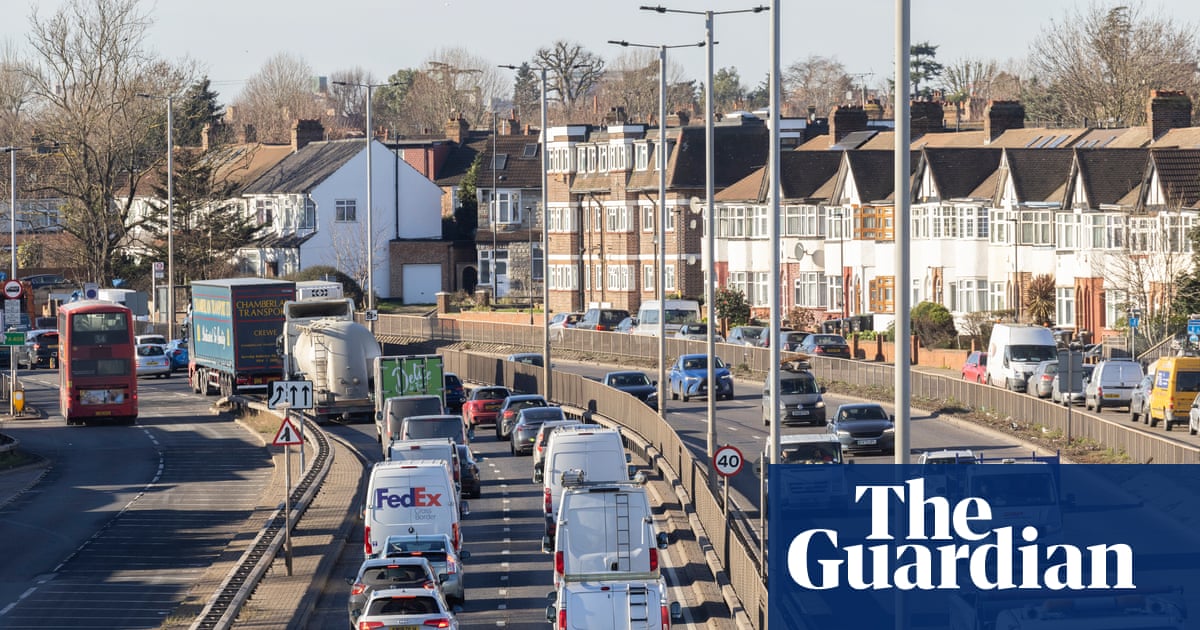The US Bankruptcy Court for the Southern District of New York recently issued a ruling in In re Giftcraft Ltd., Case No. 25-11030, granting provisional relief to Giftcraft Ltd. (Giftcraft Canada) – a company organized under the laws of Ontario, Canada – as well as three affiliates (the US Debtors) organized, respectively, under the laws of New York, Delaware, and Oregon.
In granting provisional relief on June 4, 2025, the court concluded that, although the US Debtors were not incorporated or formed under Canadian law, they had their center of main interests (COMI) in Canada and thus were eligible for relief under chapter 15 of the US Bankruptcy Code.
Background
Giftcraft Holdings, Inc. (GHI) and its affiliates (collectively, the Debtors) are a group of seven companies that operate as retailers and distributors of gifts, novelty items, jewelry, decor apparel, and other items. The direct and indirect subsidiaries of GHI include Giftcraft Canada, Giftcraft Midco, Inc. (Midco), Giftcraft Holdings USA Inc. (GH USA), Yosox USA Inc. (Yosox), Giftcraft Inc. (Giftcraft US), and RipSkirt Hawaii, LLC (RipSkirt).
To provide a sense of the relationship between the Canadian and US entities, the Debtors’ corporate structure is depicted in the following diagram:

![]()
The Debtors financed their operations utilizing various credit facilities provided by Royal Bank of Canada (RBC), with the obligations thereunder secured by liens on the Debtors’ assets, including a first-ranking security interest in all present or after-acquired personal property of each of the US-based Debtors.
Financial distress
In February 2025, RBC notified Midco and Giftcraft Canada that they had breached various covenants under the credit facility, resulting in events of default. As of March 19, 2025, the Borrowers collectively were indebted to RBC in the aggregate principal amounts of approximately USD27.1 million and CAD10.9 million.
The Debtors entered into a forbearance agreement with RBC, under which RBC conditionally agreed to refrain from exercising enforcement rights until April 30, 2025.
The forbearance agreement afforded the Debtors’ management time to (1) wind down their unprofitable business segment that specialized in sales to specialty retailers, (2) focus on more profitable key account sales, and (3) sell aged inventory to generate cash flow.
During the early stages of the forbearance period, the Debtors were able to manage cash flow and meet their reporting requirements. However, according to the Verified Petition (defined below), following the imposition of global tariffs by the US government in April 2025, the Debtors’ primary profit-generating business segment, RipSkirt, experienced an extraordinary decline in sales. The Debtors requested an extension of the forbearance period, which RBC declined to grant, and the forbearance period expired on April 30, 2025.
Canadian receivership
On May 9, 2025, RBC filed an application with the Ontario Superior Court of Justice seeking the appointment of KPMG Inc. – a licensed insolvency trustee – as receiver, to secure the Debtors’ assets and to review strategic alternatives with the goal of maximizing value for all stakeholders.
On May 14, 2025, the Canadian court issued an order appointing KPMG as receiver of the Debtors on a provisional basis, thus implementing the Giftcraft receivership under Canadian law. Under the appointment order, all property and assets of the Debtors became vested in KPMG and all collection and enforcement efforts against the Debtors were stayed.
On May 20, 2025, KPMG, as the Foreign Representative of the Debtors, filed the Verified Petition for (I) Recognition of Foreign Main Proceedings, (II) Recognition of Foreign Representative, and (III) Related Relief Under Chapter 15 of the Bankruptcy Code. Contemporaneously, KPMG filed a motion seeking entry of an order granting the following provisional relief (pending a final hearing on the Verified Petition):
“(a) providing that Bankruptcy Code sections 362 and 365 apply to the Debtors and their property located within the territorial jurisdiction of the United States;
(b) giving full force and effect to the Appointment Order on a provisional basis, including the stay provisions therein and the powers granted to the Receiver;
(c) recognizing KPMG as the representative of the Debtors with full authority to administer their assets and affairs in the United States; and
(d) granting certain procedural relief and such other relief as the Court deems just and proper.”
The court held an initial hearing on the motion on May 22, 2025, at which the court indicated that it would grant provisional relief to Giftcraft Canada for a 14-day period. The court declined to grant relief to the other Debtors pending an entity-by-entity COMI analysis. To assist in this analysis, on May 27, 2025, KPMG submitted a supplemental memorandum of law and a supplemental declaration.
KPMG supplemental filings
As an initial matter, supplemental filings stated that KPMG, as Foreign Representative, had determined to withdraw the request for recognition of the receivership with respect to GH USA, GHI, and Midco (collectively, the Nonmoving Debtors).
According to KPMG, none of Nonmoving Debtors required urgent provisional relief as none had any operations, assets, bank accounts, or customers. Accordingly, KPMG sought to narrow the scope of the court’s analysis and to seek provisional relief only for Giftcraft Canada, Giftcraft US, RipSkirt, and Yosox (the Moving Debtors).
Next, the supplemental memorandum set forth the legal requirements for obtaining chapter 15 recognition of a foreign proceedings, including that the court must find that the foreign proceeding is either a main or nonmain proceeding as to each debtor. A main proceeding is one pending in the country where the debtor has its COMI and a nonmain proceeding is one pending in the country where the debtor has an establishment, ie, a place of business where the debtor carries out nontransitory economic activity.
KPMG noted that there is a rebuttable presumption that a debtor’s registered office is its COMI, but explained that this presumption can be overcome based on consideration of other factors, including the (1) location of the debtor’s headquarters, (2) the location of management, (3) the location of primary assets, (4) the location of a majority of the debtor’s creditors, and (5) the jurisdiction whose law would apply to most disputes involving the debtor. The supplemental memorandum observed that courts have “wide latitude and discretion” in determining COMI, which is determined as of the time a chapter 15 petition is filed.
After citing ample authority for the recognition of a Canadian receivership as a “foreign proceeding” under chapter 15, KPMG focused on the key issue before the court: whether each of the Moving Debtors had its COMI in Canada. KPMG noted that the Debtors “operate a consolidated business with their sole office and headquarters in Canada,” and that Canada served as the hub for all of the companies’ operations throughout the US and Canada. KPMG posited that these operations were “functionally and operationally integrated” so that none of the Debtors organized in the US could operate independently of the Canadian business.
With regard to Giftcraft Canada, KPMG pointed out that the entity was organized under the laws of Ontario, Canada, carried on the Debtors’ business in Canada, and employed 62 individuals (all of which were located in Canada).
Turning to the more contentious issue – whether the US-based Moving Debtors had sufficient connections with Canada to establish COMI there – KPMG explained that each of the Moving Debtors located in the US (1) had no office space in the US, (2) maintained its headquarters at leased premises located at 8550 Airport Road, Brampton, Ontario, (3) maintained its books and records at the leased premises, and (4) utilized a centralized cash management system managed in Brampton, Ontario. In addition, RBC, located in Ontario, Canada, was the primary creditor of each of the Moving Debtors.
In addition, prior to the chapter 15 filing, the Debtors shared one board of directors. Although the five US-based directors resigned from the board upon the commencement of the receivership, the board continued with a single member – Krista Halliday, the President of each of the chapter 15 Debtors – who was located in and worked in Ontario, Canada. Each of the chapter 15 Debtors reports to Halliday.
More significantly, as of the petition date and as a result of the receivership, all property and assets of the Debtors had become vested in KPMG in Canada, providing further weight to the argument that the COMI of each of the Moving Debtors was in Canada.
US Trustee objection
On May 28, 2025, the Office of the US Trustee filed an objection to the provisional relief KPMG was seeking.
The US Trustee argued that the COMI for each of the US-based Moving Debtors was in the US, rather than Canada, based on the fact that each was (1) incorporated in a US state and (2) conducted business and had meaningful assets in the US.
As a result, the US Trustee asserted, provisional relief was not appropriate because KPMG, as Foreign Representative, was not able to meet its burden of establishing a likelihood of success on its request for chapter 15 recognition for each of the US-based Moving Debtors.
Bankruptcy court ruling
On June 4, 2025, the court issued its Memorandum Opinion and Order Granting Provisional Relief, overruling the UST objection and finding that KPMG had satisfied the requirements for provisional relief under Bankruptcy Code section 1519 as to each of Moving Debtors.
The court held that (1) KPMG, as Foreign Representative, had met its burden of establishing a likelihood of success of recognition as to the Moving Debtors, (2) absent provisional relief, imminent and irreparable harm would likely result, (3) the balance of harms favored the Foreign Representative, and (4) granting such relief was in the public interest.
The court stated that “Chapter 15 is not a substitute for Chapters 7 and 11 for US-based debtors,” and that the court is vigilant to prevent abuse of the chapter 15 process. Based on the facts presented, however, the court was satisfied that the Foreign Representative was likely to establish that the COMI of each of the Moving Debtors, as of the petition date, was in Canada.
COMI analysis
The court’s analysis of the COMI of each of the Moving Debtors was key to the ruling granting provisional relief. With regard to Giftcraft Canada, the court noted that the company was organized under the laws of Ontario, Canada – where it had its registered office – and had 62 Canada-based employees performing a wide variety of functions for the corporate enterprise.
Based on the facts presented, and as no party had objected to provisional relief for Giftcraft Canada, the court concluded that the Foreign Representative was likely to obtain recognition of the receivership of Giftcraft Canada as a foreign proceeding.
With respect to the US-Based Moving Debtors (Giftcraft US, RipSkirt, and Yosox), the court noted that each of these parties was organized in the US, creating a rebuttable presumption of COMI in the US. However, the court concluded that this presumption was overcome by the fact that as of the petition date, all property and assets of the Debtors became vested in KPMG, which was granted broad authority to operate the Debtors’ businesses.
The court also observed that the primary creditor of each of these entities was RBC, located in Canada. The court further concluded that the Giftcraft receivership constituted “pre-filing restructuring activities” that suggest that, as of the petition date, the COMI of the US-based Moving Debtors likely was in Canada.
The court therefore concluded that the Foreign Representative was likely to succeed on obtaining recognition of these entities, and granted the requested provisional relief. In reaching this conclusion, the court appears to have credited the factual statements in support of recognition contained in the supplemental filings.
Takeaways of Giftcraft
Central to any effort to obtain relief under chapter 15 is the ability of the Foreign Representative to establish the location of the Debtor’s operations as of the petition date.
As shown by the Giftcraft ruling, (1) the presumption that a US debtor’s COMI is in the state in which it is organized is rebuttable, and (2) COMI can be shifted from that jurisdiction based on business activities and other factors, including prefiling restructuring activities. As a result, an entity organized in the US is not necessarily limited to seeking relief under chapter 7 or chapter 11.
In the aftermath of Giftcraft, an uptick in chapter 15 proceedings by entities organized in the US is possible. The US–Mexico–Canada Agreement, which replaced North American Free Trade Agreement as of July 1, 2020, abolished all requirements in the affected countries that an entity engaged in cross-border transactions must maintain a representative office or be a resident of a country in order to conduct business there.
As a result, an enterprise engaged in business in the US and Canada (or Mexico) need not maintain an office in both countries. This could lead to scenarios where an entity is organized in the US but has its headquarters outside the US – as was the case with the Giftcraft entities.
This could provide significant flexibility for US debtors that have foreign operations. In two recent rulings, bankruptcy courts have upheld the use of nonconsensual third-party releases in chapter 15 cases, notwithstanding the prohibition on such releases under Harrington v. Purdue Pharma LP, 603 U.S. 204 (2024). See our alert (analyzing the rulings in In re Crédito Real, SAB de CV, SOFOM, ENR, Case No. 25-10208 (TMH), 2025 Bankr. LEXIS 751, at *1 (Bankr. D. Del. Apr. 1, 2025) [D.I.65] (involving recognition of a Mexican concurso plan) and In re Odebrecht Engenharia e Construção SA, Case No. 25-10482 (MG), 2025 Bankr. LEXIS 990, at *1 (Bankr. S.D.N.Y. Apr. 21, 2025) [D.I. 23] (involving recognition of a Brazilian recuperação judicial proceeding).
In light of the Giftcraft ruling, the rulings in Credito Real and Odebrecht, and the change in bankruptcy procedure occasioned by the US Supreme Court’s ruling in Purdue Pharma, the US Bankruptcy Courts will likely need to continue to address issues that arise when US-formed entities are part of a foreign proceeding and seek recognition of those proceedings in the US under chapter 15.
For more information, please contact the authors.





